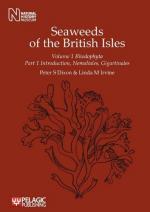|
This section contains 268 words (approx. 1 page at 300 words per page) |
The red algae phylum Rhodophyta synthesizes a class of water-soluble pigments termed phycobilins, known to be produced only by another algae, the Cryptomonads. There are approximately 6,000 species of Rhodophyta. Some of them are unicellular species that grow as filaments or membrane-like sheet cells, and some multicellular coralline species deposit calcium carbonate inside and around their cell walls, which are very similar in appearance to pink and red corals. Some Rhodophyta have an important role in coral-reef formation in tropical seas due to the deposits of calcium carbonate crystals they release in the environment, and are therefore termed coralline algae.
Rhodophyta are ancient algae whose fossil remains are found under the form of coralline algal skeletons in limestone deposits of coral reef origin dating back to the Precambrian Era. They use the blue spectrum of visible light to accomplish photosynthesis that allows them to live in deep waters, storing energy under the form of Floridean starch. They make mostly chlorophyll-a, and the pigments alpha and beta-carotene, phycoerythrin, as well as others similar to those made by Cyanobacteria, such as allophycocyanin and r-phycocyanin. The cell walls are made mainly of cellulose (but some species use xylan), and colloidal substances, such as agars and carageenan; and the cells may be multinucleated. The Floridean starch, a carbohydrate molecule consisting of 15 units of glucose, is kept free in the cytoplasm, whereas in other algae it is attached to the chloroplast. Some species are consumed by humans such as the Japanese nori (Porphyra) and others are utilized as components in processed food and by the pharmaceutical industries, such as Chondrus, and Gelidium.
|
This section contains 268 words (approx. 1 page at 300 words per page) |


